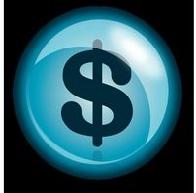
 |
|
| Financial Terms | |
| Inflation |
|
Information about financial, finance, business, accounting, payroll, inventory, investment, money, inventory control, stock trading, financial advisor, tax advisor, credit.
Main Page: financial, payroll, money, financial advisor, credit, business, investment, inventory control, |
Definition of Inflation
InflationA sustained increase in the general price level. The inflation rate is the percentage rate of change in the price level. inflationRate at which prices as a whole are increasing. InflationThe rate at which the general level of prices for goods and services is rising.
Related Terms:Inflation riskAlso called purchasing-power risk, the risk that changes in the real return the investor will Inflation uncertaintyThe fact that future inflation rates are not known. It is a possible contributing factor to Inflation-escalator clauseA clause in a contract providing for increases or decreases in inflation based on Cost-Push Inflationinflation whose initial cause is cost increases rather than excess demand. See also demand-pull inflation. Demand-Pull Inflationinflation whose initial cause is excess demand rather than cost increases. See also cost-push inflation.  DisinflationA reduction in the rate of inflation. HyperinflationExtremely high inflation. Inflation TaxThe loss in purchasing power due to inflation eroding the real value of financial assets such as cash. After-tax real rate of returnMoney after-tax rate of return minus the inflation rate. Consumer Price Index (CPI)The CPI, as it is called, measures the prices of consumer goods and services and is a Fisher effectA theory that nominal interest rates in two or more countries should be equal to the required real NominalIn name only. Differences in compounding cause the nominal rate to differ from the effective Nominal interest rateThe interest rate unadjusted for inflation. Purchasing-power riskRelated: inflation risk  Real exchange ratesExchange rates that have been adjusted for the inflation differential between two countries. Real interest rateThe rate of interest excluding the effect of inflation; that is, the rate that is earned in terms Tilted portfolioAn indexing strategy that is linked to active management through the emphasis of a Real Interest RateThe rate of interest paid on an investment adjusted for inflation international Fisher effectTheory that real interest rates in all countries should be equal, with differences in nominal rates reflecting differences in expected inflation. purchasing power parity (PPP)Theory that the cost of living in different countries is equal, and exchange rates adjust to offset inflation differentials across countries. Accelerationist HypothesisBelief that an effort to keep unemployment below its natural rate results in an accelerating inflation. Cold-Turkey PolicyDecreasing inflation by immediately decreasing the money growth rate to a new, low rate. Contrast with gradualism. Consumer Price Index (CPI)An index calculated by tracking the cost of a typical bundle of consumer goods and services over time. It is commonly used to measure inflation. DeflationA sustained decrease in the price level. The opposite of an inflation. GradualismA policy of decreasing the rate of growth of the money supply gradually over an extended period of time, so that inflation can adjust with smaller unemployment cost. Contrast with cold-turkey policy. Incomes PolicyA policy designed to lower inflation without reducing aggregate demand. Wage/price controls are an example. Interest Rate, RealNominal interest rate less expected inflation. NAIRUNonaccelerating inflation rate of unemployment. See natural rate of unemployment. Natural Rate of Unemployment (NRU)The level of unemployment characterizing the economy in long-run equilibrium, determined by the levels of frictional, structural, and institutionally induced unemployment. At this rate of unemployment, inflation should be constant, so it is sometimes called the nonaccelerating inflation rate of unemployment, or NAIRU. Phillips CurveRelationship between inflation and unemployment. Purchasing Power ParityTheory that says that over the long run exchange rate changes offset any difference between foreign and domestic inflation. This result assumes that the real exchange rate remains constant, something that is not true even in the long run. StagflationSimultaneous existence of high inflation and high unemployment, or simultaneous existence of rising inflation and r sing unemployment. IndexationThe adjustment of benefits to compensate for the effects of inflation. Related to : financial, finance, business, accounting, payroll, inventory, investment, money, inventory control, stock trading, financial advisor, tax advisor, credit. |